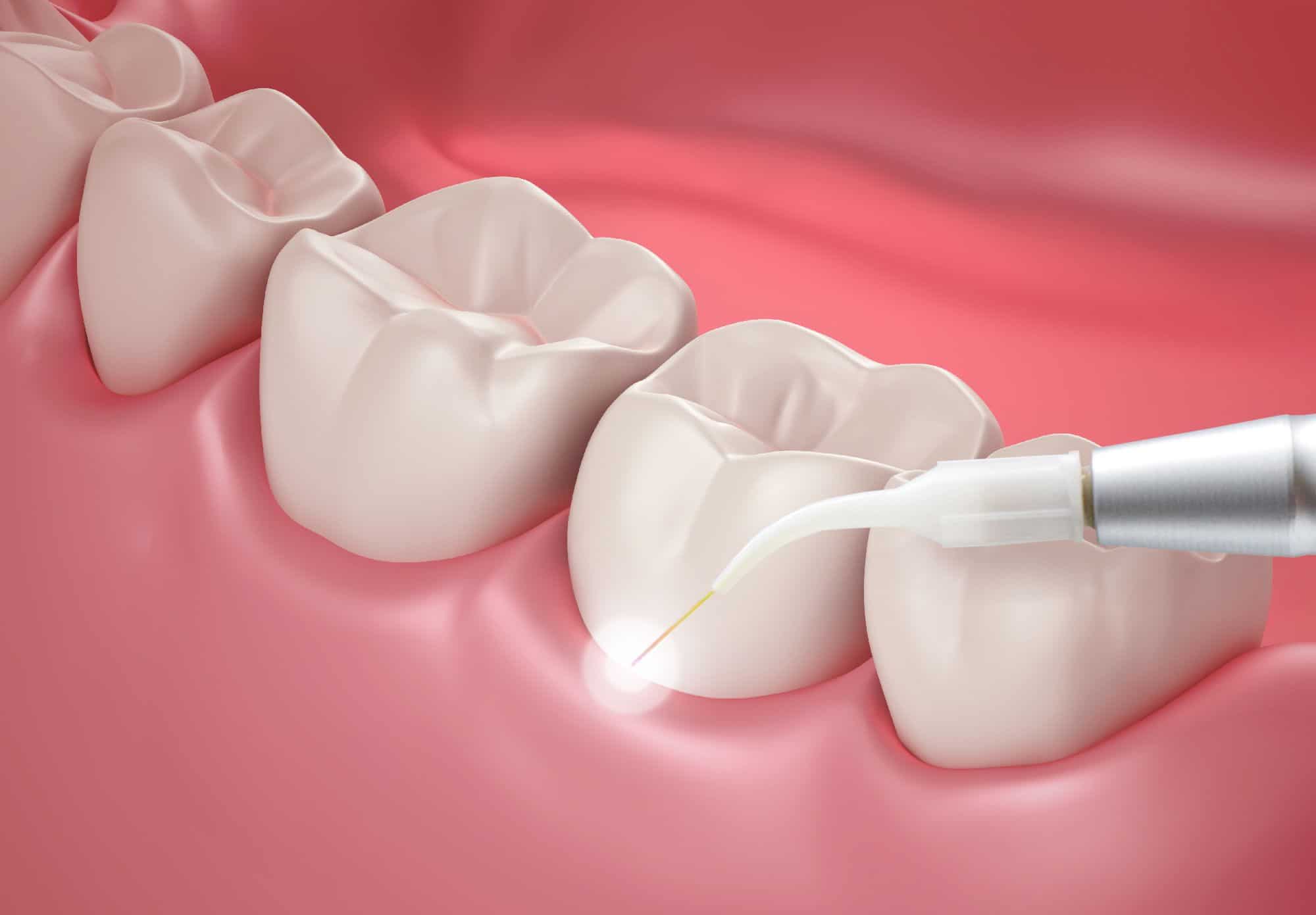Periodontal Procedures
Your gums play a vital role in keeping your teeth healthy and beautiful. However, it receives less care than your teeth do. In fact, gum disease is one of the leading causes of tooth loss among adults. More periodontal therapy procedures are actually being done in a day at a dental clinic. That’s why it’s essential to see your dentist regularly so we can check your gums and teach you the proper way of caring for it.
According to medical studies, pain isn’t present when gum disease is starting to develop. That’s also probably why patients don’t notice they have a problem until it’s already in an advanced stage. So, here are some of the things that may indicate gum issues:
- Reddish or swollen gums
- Tender and bleeding
- Persistent bad breath
- Pain when chewing
- Sensitivity to hot and cold food
- Your teeth feel loose
- Gums that seem to be pulling away
- Teeth appearing to be longer due to receding gums
Periodontal Therapies
When a patient comes in for a gum problem, our dentists initially take a periodontal screening. This is to evaluate the patient’s status about their periodontal health. During this dental exam, our dentists checks the gum pockets if there are bleeding and dental plaque deposits. They will check the appearance of the gums for symptoms such as colour change. The patient’s medical and dental history is also important during the assessment.
After gathering these data, it is time to create a dental hygiene plan for the patient. Depending on the symptoms, here is the list of periodontal treatment procedures that dentists perform.
Scaling and root planing
Scaling and root planing is a non-invasive method of reducing gum infection by thoroughly cleaning deep into the periodontal pocket. Basically, the dentist lifts the gums and reaches inside the gumlines to remove tartar and bacterial toxins. After which, we will apply antibiotics to leave the gums smooth and disinfected.
Most patients only need scaling and root planing to reverse the symptoms of simple gum diseases, like gingivitis. However, if symptoms persist, the patient needs maintenance therapy or other periodontal procedures.
Gum graft
When the gums recede, it exposes the tooth root which could lead to numerous tooth and gum problems. To prevent this from happening further or ending up in something worse, like bone loss, the patient may need a gingival graft.
A gum graft surgery is a process of covering the exposed tooth root using a soft tissue. The gum tissue usually comes from the palate of the patient. As a result, the gumlines become even and the patient achieves healthier teeth.
Regenerative procedure
One of the causes of severe gum infection is bone damage. At this stage, a simple periodontal process can no longer reverse the problem. However, with the regenerative procedure, it may still save the bone and the affected tooth. The treatment involves using tissue-stimulating proteins in naturally restoring the health of the bone and tissues.
Pocket reduction
Normally, your gums should be snuggling fit around your teeth to keep it in a sturdy position. However, due to bacteria buildup, gum pockets begin to loosen its fit and eventually expose more of the tooth under the gumline. To prevent this, our dentists performs pocket reduction to clean under the gums and reattach it properly.
Dental implants
Severe gum disease may lead to tooth loss. One way to restore a fully-functioning prosthetic tooth is by attaching dental implants and a crown. Tooth implants are screw-like posts made of metal. It is deeply attached to the jawbone to provide a strong foundation for the new tooth. It needs incision on the gums before accessing bones then closes the gums altogether. This process gives time to fuse the post with the bone and tissues.
If you suspect that you might be experiencing gum issues, consult it to Dr Tang and Dr Young right away. Don’t delay any dental problem and receive the proper treatment to save your smile.




